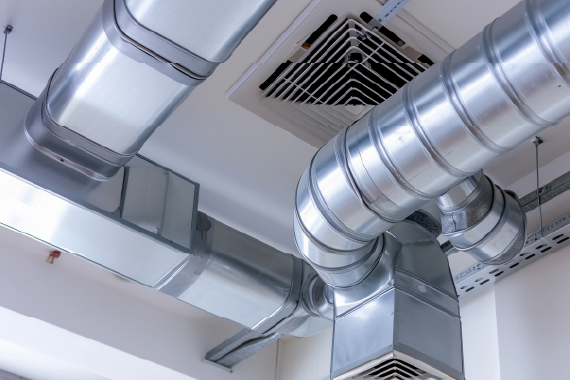We collaborate to achieve sustainable success
Get in touch with usBeyond GWP: The Dual Mandate of Sustainability and Efficiency in Next-Gen HVACR Systems
The year 2025 marks a profound turning point for the Heating, Ventilation, Air Conditioning, and Refrigeration (HVACR) industry. No longer is the focus solely on reducing the Global Warming Potential (GWP) of refrigerants; a parallel and equally critical mandate has emerged: significantly enhancing energy efficiency. This dual imperative is driving a wave of innovation, compelling manufacturers to rethink system designs and usher in a new era of sustainable and high-performing cooling and heating solutions.
The Regulatory Catalyst: A Dual Pressure
The primary driver behind this transformative shift is a tightening regulatory landscape across major global economies. In the United States, a key regulation effective from January 2025 mandates that all new air conditioning units must utilize refrigerants with a GWP of 700 or less. This effectively phases out high-GWP refrigerants like R-410A, which has a GWP of around 2,088, from new HVAC systems.
However, the regulations extend beyond just GWP limits. They are also accompanied by stricter energy efficiency standards for HVAC systems. This means manufacturers are not just replacing one chemical with another; they are required to design entirely new units that consume less energy while still providing effective cooling and heating. This dual pressure creates a complex yet exciting challenge for the industry.
Innovation in Action: New Refrigerants and System Designs
In response to these mandates, manufacturers are rapidly developing and deploying innovative cooling system designs centered on low-GWP refrigerants and improved energy performance. The transition is accelerating the adoption of alternatives such as R-32 (GWP 675) and R-454B (GWP 466) as replacements for R-410A in new HVAC applications.
These new refrigerants, while offering significantly lower environmental impact, often come with different thermodynamic properties and safety considerations, such as mild flammability (classified as A2L). This necessitates a complete redesign of system components, including compressors, coils, and valves, to optimize performance and ensure safety. For instance, new coils are being designed with factory-installed R-454B TXVs and refrigerant detection system sensors, alongside updated electrical components to minimize ignition sources.
Manufacturers like Lennox have focused on maximizing equipment performance and efficiency with these new refrigerants while minimizing changes to installation requirements, ensuring a smoother transition for contractors. Daikin is also showcasing new low-carbon heating and cooling solutions, including systems using R290 (propane) and CO₂ VRV systems, demonstrating a flexible refrigerant strategy for decarbonization.
Beyond Compliance: The Efficiency Imperative
The drive for energy efficiency is not merely a side effect of the GWP phase-down; it's a core component of the industry's sustainability strategy. Systems designed for these new, compliant refrigerants are inherently expected to be more energy efficient. This improved efficiency translates directly into reduced electricity consumption, leading to lower utility bills for consumers and businesses, and a significant reduction in overall carbon emissions from power generation.
This dual focus means that the HVACR systems of tomorrow will not only be kinder to the planet through their refrigerant choice but also through their operational footprint. This holistic approach to environmental responsibility is a key differentiator for next generation cooling and heating technologies.
Challenges and Opportunities
While the transition presents challenges, such as the need for updated technician training to handle new refrigerants and potentially higher initial installation costs, the long-term benefits are substantial. Companies that proactively invest in these dual-mandate solutions gain a competitive edge in an increasingly eco-conscious market.
The shift creates significant opportunities for innovation in product development, manufacturing processes, and installation practices. It encourages a move towards systems that are "future-proofed" against evolving environmental policies, offering long-term savings and enhanced performance.
The F-Gas market in mid-2025 is defined by a powerful dual mandate: drastically reducing the GWP of refrigerants while simultaneously boosting energy efficiency. This is a regulatory hurdle and it's a catalyst for profound technological advancement. By embracing low-GWP alternatives and designing systems for optimal energy performance, the HVACR industry is not only meeting its environmental obligations but also delivering solutions that offer economic benefits and a more sustainable future for cooling and heating worldwide.

